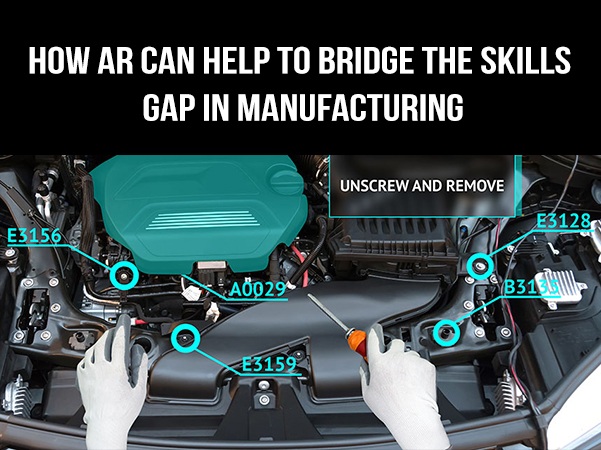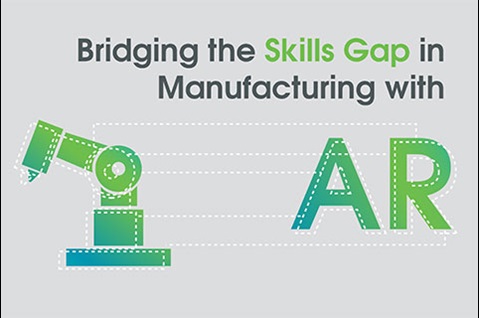
The labor market in manufacturing is in a state of reduction. It’s not just losing net employees, newer employees are skewing younger, and less experienced. With a surging number of “Baby Boomers” retiring every day, today’s industrial companies must proactively address the widening skills gap that is threatening to slow productivity across the industry. Maintaining a certain level of expertise is important for businesses to remain competitive, especially as manufacturing equipment and the production environment grows more complex.
Over the next decade, the ability to fill the jobs that make up a shrinking technical workforce could mean the difference between success or failure. Augmented reality is a transformative digital solution that can help to bridge the skills gap. Many organizations are already seeing improvements in the following areas.
Manufacturers can begin to address the skills gap by recruiting new production engineers, assembly technicians, and production line maintenance technicians. However, hiring for these kinds of technical roles known for lengthy onboarding times is difficult, and keeping new workers from job-hopping poses its own set of challenges.
AR accelerates ramp-up times so new workers can become effective in the field almost immediately. Technicians using AR can perform complicated tasks faster and more accurately, improving their overall performance and job satisfaction. With a generation that is accustomed to technology and learning with digital tools, solutions like AR are differentiators when it comes to building the next generation workforce.
Streamlined training for new workers is imperative for bridging the skills gap, but today’s job seekers learn differently than previous generations. They need access to information in a totally different way, and manufacturers need to adapt to this reality.
Companies that use AR for training purposes enjoy faster learning curves for new employees. Trainees retain knowledge better and get a deeper level of understanding of training material with visual, graphically rich training experiences. Grain Systems Inc. is using AR to reduce training time for their GSI Power Dryer by 60%, going from 5 hours to 2 hours. AR enables real-time, on-the-job training which is less disruptive to the manufacturing cycle, as well as in-context work instructions that improve speed, outcomes, and safety for new workers.
The tribal knowledge that manufacturing organizations have access to is dwindling as aging workers continue to retire. Collaborative solutions like AR that can intuitively facilitate knowledge transfer are particularly valuable for their ability to connect people in different locations, like in an office and on the factory floor. Manufacturers equipped with AR can optimize their expert resources without them having to travel, allowing them to quickly scale expertise when and where it’s needed.
Veteran employees that are approaching retirement can choose to work remotely and provide over-the-shoulder expert guidance through collaborative AR experiences. Job satisfaction increases for older workers with a less physically demanding role where they still feel incredibly valued, and industrial organizations can save on travel costs without sacrificing productivity.
If you enjoyed this blog, check out this complementary infographic showing how manufacturers can leverage industrial AR. Also, check out the previous blog in this series to learn how AR can help lower operational costs.

Greg Kaminsky
Greg is an avid blogger interested in industrial innovation, technology, and the intersection between the two. As a Content Marketing Specialist for PTC, Greg is excited about how things like virtual and augmented reality, the internet of things, and predictive analytics are shaping the future of manufacturing.
©Copyright 2024. All rights reserved by Modelcam Technologies Private Limited PUNE.
Image Courtesy : PTC